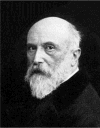A brief history of choline
- PMID: 23183298
- PMCID: PMC4422379
- DOI: 10.1159/000343120
A brief history of choline
Abstract
In 1850, Theodore Gobley, working in Paris, described a substance, 'lecithine', which he named after the Greek 'lekithos' for egg yolk. Adolph Strecker noted in 1862 that when lecithin from bile was heated, it generated a new nitrogenous chemical that he named 'choline'. Three years later, Oscar Liebreich identified a new substance, 'neurine', in the brain. After a period of confusion, neurine and choline were found to be the same molecule, and the name choline was adapted. Lecithin was eventually characterized chemically as being phosphatidylcholine. In 1954, Eugene Kennedy described the cytidine 5-dihphosphocholine pathway by which choline is incorporated into phosphatidylcholine. A second route, the phosphatidylethanolamine-N-methyltransferase pathway, was identified by Jon Bremer and David Greenberg in 1960. The role of choline as part of the neurotransmitter acetylcholine was established by Otto Loewi and Henry Dale. Working in the 1930s at the University of Toronto, Charles Best showed that choline prevented fatty liver in dogs and rats. The importance of choline as an essential nutrient for human health was determined in the 1990s through controlled feeding studies in humans. Recently, an understanding of the role of genetic variation in setting the dietary requirement for choline in people is being unraveled.
Copyright © 2012 S. Karger AG, Basel.
Figures







References
-
- Gobley T. Recherches chimiques sur les œufs de carpe. J Pharmacie Chim Paris. 1850;17:401.
-
- Strecker A. Über eingige neue Bestandtheile der Schweinegalle. Ann Chem Pharmacie. 1862;183:964–965.
-
- Gobley T. Sur la lécithine et la cérébrine. J Pharmacie Chim Paris. 1874;19:346.
-
- Liebreich Ueber die chemische Beschaffenheit der Hirnsubstanz. Ann Chem Pharmacie. 1865;134:29.
-
- Kennedy EP. Synthesis of phosphatides in isolated mitochondria. II. Incorporation of choline into lecithin. J Biol Chem. 1954;209:525–535. - PubMed
Publication types
MeSH terms
Substances
Grants and funding
LinkOut - more resources
Full Text Sources
Medical

